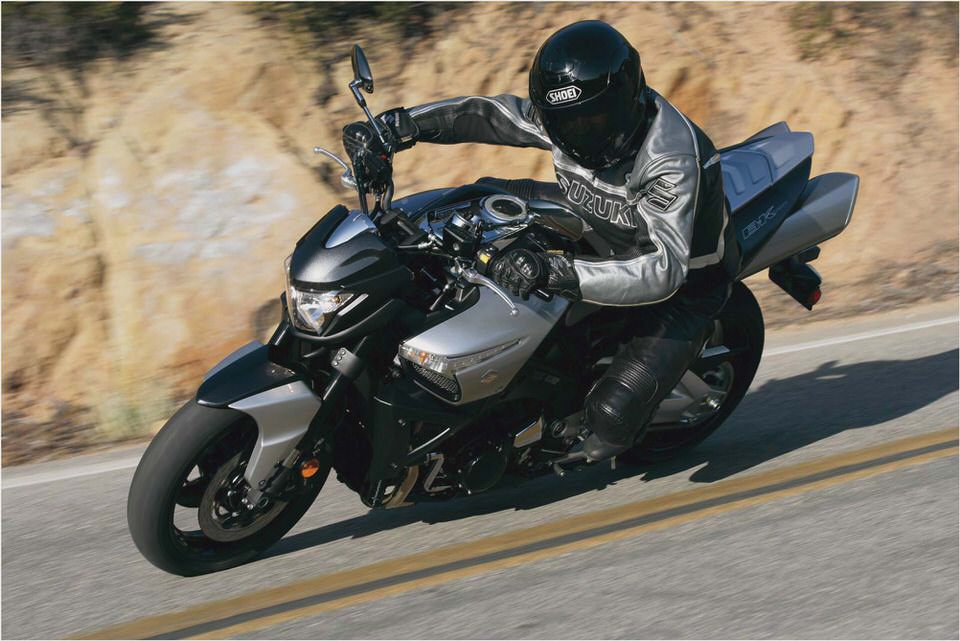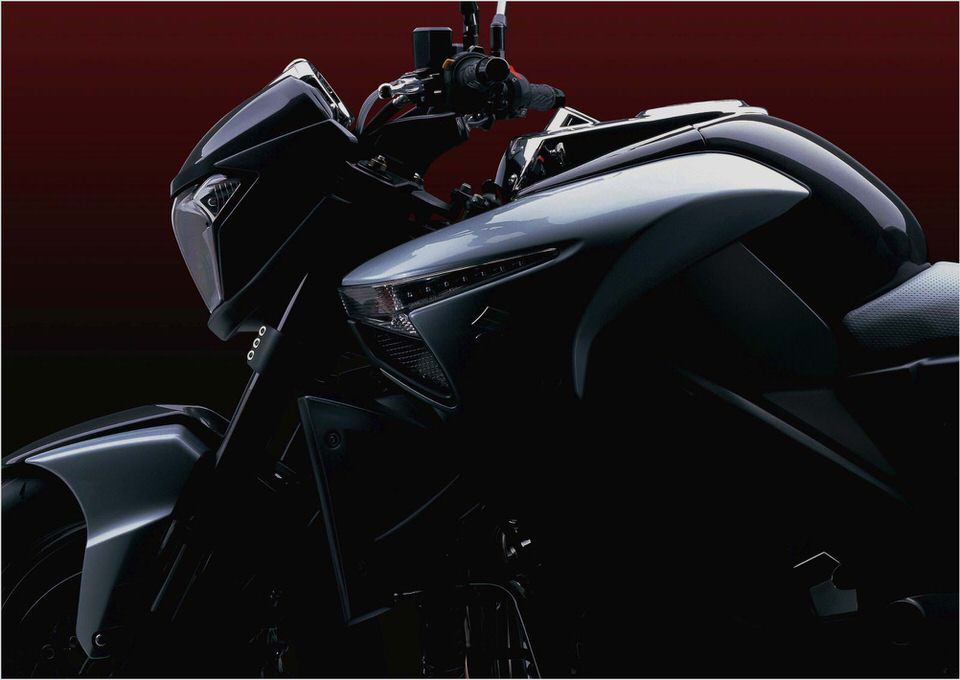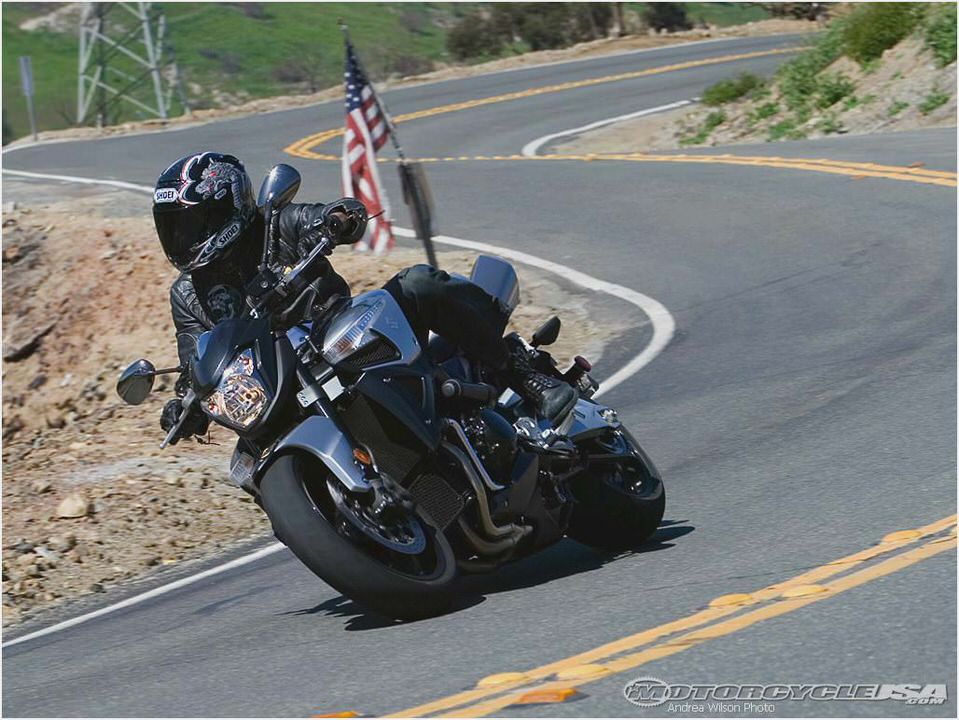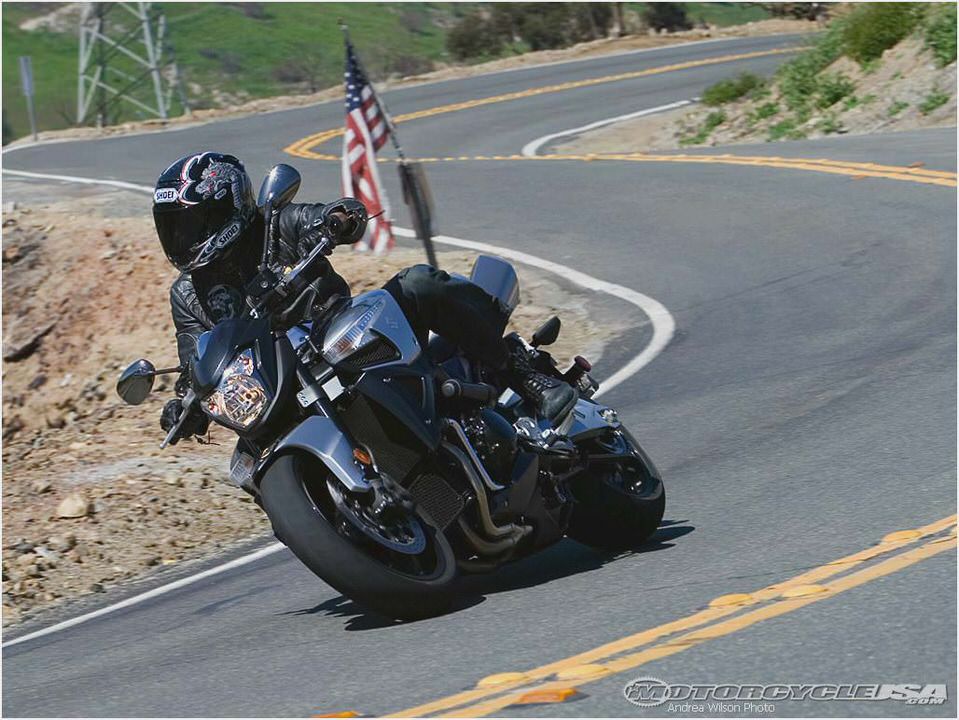

0908_sbkp_09_z+2010_suzuki_katana+right_view.jpg
It arrived in 1980 with a background of gasps – the public didn’t quite know what to make of the fastest Suzuki ever. Styled by German design house Target, the bullet-shaped nose and angular profile was unlike anything prior, and motorcyclists the world over either loved it or hated it – there was no fence-sitting here.
The space age looks may have arrived in the era of Star Wars but there was the go to match the show. Although discontinued after just four years, the Katana had made its mark (the styling cues can still be seen on many bikes today) and was resurrected many times in limited numbers. There were offshoots as well – the naked 550, shaft-drive 650, 750, made-for-racing 1000, as well as the later 250 and 400cc Japanese market variants.
Suzuki even created a re-styled 750 version with a pop-up headlight in 1984. Since then, the Katana brand name has been diluted and misused on everything from a fully-faired 600 to a 50cc scooter, which is nothing short of criminal.
Let’s not forget, for a while the original Katana was the fastest, most badass powered two-wheeler ever to rumble down the highways, not the Can-O-Tuna soft sportbike the name suggests today.
What’s the most dyno-busting powerplant in the Suzuki line-up? The Hayabusa/B-King motor of course, so we’ll start with that. As good as the motor is, we’d still like more real-world torque for those traffic light getaways so we’ve re-tuned it for more bottom-end pull at the expense of a few top end MPH.
We don’t expect rear tires to last long.


The only other change is the ditching of those overweight exhaust cans which should snip a few milliseconds off the launch time. It’ll eat a V-Max for breakfast and provide hours of one-wheel entertainment in whichever of the first three gears you like.
While the B-King is fantastic in a straight line, it’s not so clever in the corners. This is why our bike uses the main beam from an R1 frame, a heavily modified KTM RC8 swingarm and 2009 GSX-R1000 big piston forks. Rising rate twin rear shocks help tame our 170 HP beast and wheels and radial brakes are stock B-King items.
Our tribute to the Katana uses a modified original fuel tank, though it still utilizes the off-center fuel cap arrangement. The front cowl keeps the aggressive and streamlined angular shape but incorporates the ram-air intakes and a faired-in GSX-R-style headlight. An adjustable flip-up screen is an option that enables our Kat to be an effective all-day rider.
Although passengers are catered to with a minimal seat pad under the tail unit’s cowling (designed to minimise drag), we’d prefer to ride solo: there’s only so much screaming and feet-under-the-armpits we can take.
- Suzuki bringing back ghosts of the 80s with turbocharged motorcycle…
- Forged Pistons Performance Engine Pistons Car Racing Pistons Turbo
- The Specifications for a 1996 Suzuki Bandit 600 eHow
- 2014 Can Am DS 450 X mxVehicles reviews – Release date Information, full…
- KTM Cairoli & Herlings make it pure orange in Thailand!
